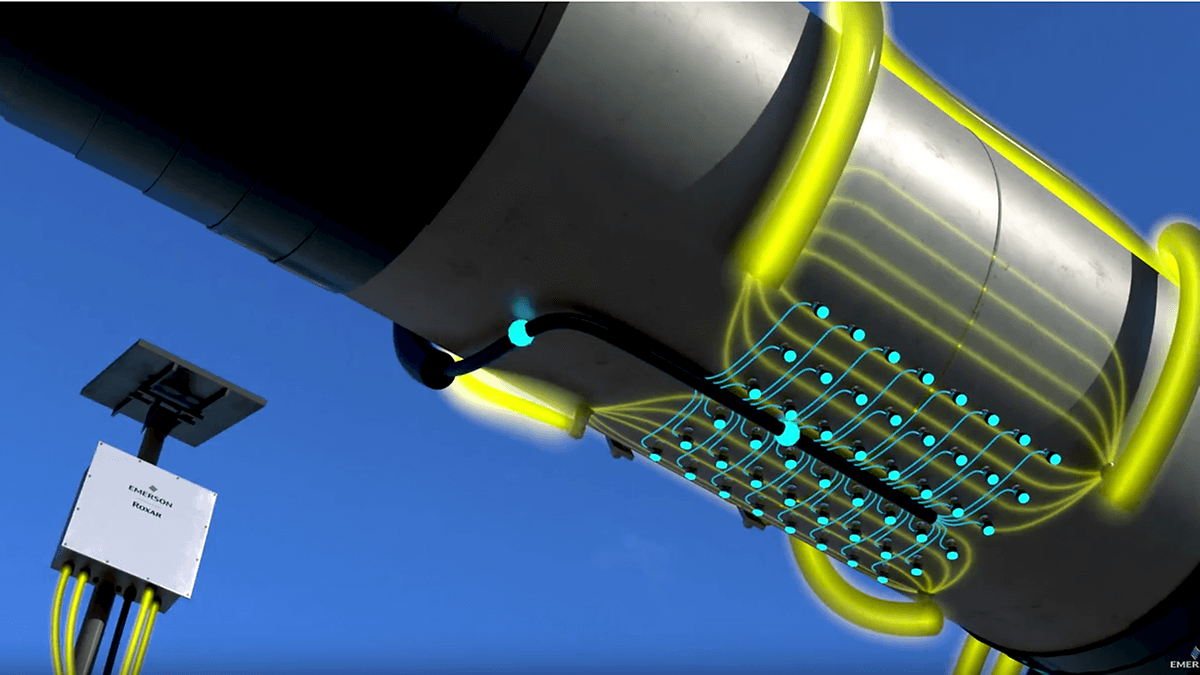The need for pipelines to get oil & gas from producing regions to processing and distribution areas in the global supply chain continues to grow. Monitoring for corrosion is critical to prevent safety and environmental incidents.
This 3 ½ minute YouTube video, Roxar FSM Log 48 Area Corrosion Monitor shows how this technology permanently monitors a pre-defined pipeline area—improving pipeline integrity management (PIM) programs that traditionally rely on infrequent and offline techniques such as in-line inspection (ILI), direct assessment (DA) or hydrostatic pressure tests (HPT).
The video opens highlighting a statistic of 3.5 million kilometers (2.17 million miles) of pipelines in service across the globe. Corrosion within a pipeline can lead to leaks, which can cause environmental & safety repercussions, financial risk, and reduced transportation capacity. The U.S.-based National Association of Corrosion Engineers (NACE) estimates that $7 billion USD is lost each year due to pipeline corrosion.
Pipeline smart pigs through their use of “sensors, transmitters, GPS, magnetic fields, eddy current, ultrasonic and acoustics” are the traditional means of spotting corrosion. This in-line monitoring is performed at periodic intervals and can miss problems developing between runs. This challenge, combined with higher cost, reduced transportation and access difficulties make many pipeline transporters looking for an alternative approach.
A non-intrusive continuous alternative is the Roxar FSM Log 48 Area Corrosion Monitor. It monitors targeted pipeline areas continuously and permanently and captures and reports corrosion events in real time, so that remedial actions can be taken before unplanned incidents occur.
 The technology is based on providing an area of the pipeline with an electric current which creates an electric field around the pipeline in this area. Corrosion is measured by changes in voltage between the sensing pins installed on the external pipe wall. This corrosion monitoring technology can distinguish between generalized corrosion distributed over a wide area and localized corrosion where the corrosion is concentrated in small areas where leaks may develop if not addressed.
The technology is based on providing an area of the pipeline with an electric current which creates an electric field around the pipeline in this area. Corrosion is measured by changes in voltage between the sensing pins installed on the external pipe wall. This corrosion monitoring technology can distinguish between generalized corrosion distributed over a wide area and localized corrosion where the corrosion is concentrated in small areas where leaks may develop if not addressed.
These corrosion monitors should be installed at high risk, hot spot areas along the pipeline such as bends and low spots where corrosion is most likely to occur. Data from these monitors can be sent via fiber optic, cellular, TCP/IP and wireless local area networks (WLANs) and powered via solar cells.
Watch the video for more on how corrosion monitors can increase the intervals between smart pig runs, reduce maintenance costs, optimize corrosion inhibitor chemical treatment costs, and provide early warning to address to better plan and execute required maintenance.
You can also connect and interact with other midstream experts in the Oil & Gas group in the Emerson Exchange 365 community.
